
The best sets of exercises for stretching the shoulder girdle
To keep your body in good physical shape, you need regular exercise. But, the average price of a gym membership is often unreasonably high. If there is an opportunity to practice independently, then you should not neglect it. Stretching should not be forgotten when doing the best exercise programs.
What is stretching
Stretching or stretching is a set of exercises aimed at increasing the elasticity of the muscles, thereby increasing the strength, endurance and flexibility of the body, as well as strengthening the muscles and joints.
Stretching is primarily necessary to prevent injury while playing sports. According to the rules, a warm-up is carried out before starting a workout, and after a short rest - stretching. It is designed to help the body adapt to stress. After the end of the workout, a complex of final stretching exercises is carried out - a hitch. It allows you to relieve overstrain from the muscles, cool them. After stretching, blood flow in the tissues increases, which means that their supply of oxygen and nutrients improves.
Stretching helps relieve muscle pain.
Why stretch
It is necessary not only for athletes, but also for ordinary people, especially those leading a sedentary or sedentary lifestyle for the following reasons:
- Increased flexibility. The main reason people start stretching is to improve their figure. In addition to developing flexibility, the silhouette becomes slim and fit.
- Increased muscle elasticity. After stretching, muscle fibers acquire elasticity, which significantly reduces the risk of injury during sports.
- Pain relief. After a set of exercises, the muscles relax and relieve tension, thereby relieving pain and stiffness, as well as the feeling of a stiff, numb body.
- Stimulating blood flow. Exercise increases overall tone, improves blood supply to organs and tissues, which contributes to the regeneration processes.
- Relieve stress. During exercise, in response to muscle tension in the brain, endorphins are produced - the body's own analgesics and hormones of joy.Therefore, with a moderate intensity of exercise, a person's mood improves, vitality increases, and depression and depression recede.
Preparation for training
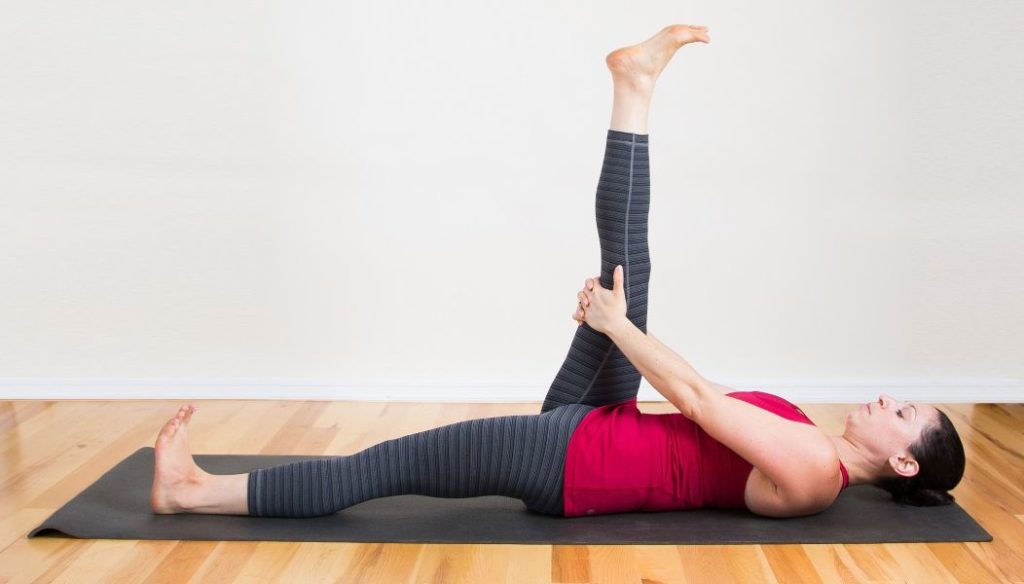
Stretching helps warm up the body to prepare it for stress. Many sports programs include mandatory stretching and muscle relaxation exercises.
Cool down after training
Stretching after strength training will help muscles and joints recover faster, which means that the effectiveness and benefits of training will increase. The hitch helps to get a beautiful, but not pumped, relief.
Stretching types
There are several types of stretching:
- dynamic - implies an active change of positions with a maximum degree of tension;
- static - based on fixing one position for some time;
- ballistic - suitable for professional athletes, as it combines maximum stretching with sharp jerks.
They also distinguish between active and passive stretching:
- active - in which a person independently performs exercises;
- passive - classes are held with a partner who helps to perform the movements.
Stretching rules
To get an additional effect from classes and to reduce the likelihood of injury, it is recommended:
- Start with a warm-up. The muscles and ligaments need to be warmed up, then they will stretch better.
- Pull the entire body sequentially starting from the neck, shoulder girdle, chest and back, ending with the leg muscles.
- When performing static stretching, and it is recommended for an unprepared person, hold the body position at the maximum stretching point for at least 30 seconds.
- stop when a slight tingling sensation occurs;
- pay special attention to correct breathing. It should be deep and measured.
Stretching should be stopped immediately if:
- strong pain;
- muscle spasm;
- dizziness;
- crunching or clicking in the joints.
It is better to go to stretching the shoulder girdle immediately after stretching the neck. To do this, you can make smooth turns and tilts of the head or, with slight effort, alternately pull your head with your hands to your shoulder.
Equipment for stretching
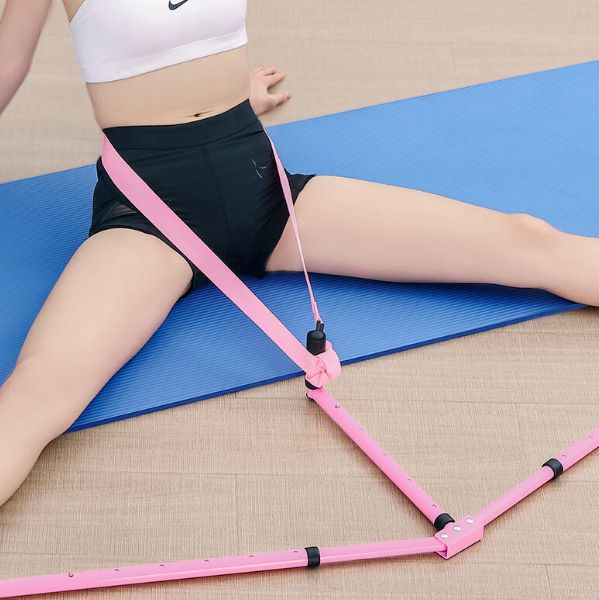
Often, additional equipment is needed for arm and shoulder stretches. It can be purchased at any sports store or ordered online. These are a variety of stretching machines, stretching straps, rubber bands with loops, fitballs and all kinds of rollers and pads. The material of these products may vary. According to buyers, it is better to consult a professional trainer before purchasing a device. He will tell you the best manufacturers and popular models. The rating of quality products with the necessary function can always be tracked via the Internet.
It will not be superfluous to consult the seller of a sports store. He will help you navigate the price, answer the question of which company is better to purchase this or that product, and voice its characteristics. In addition, he will select inexpensive, budget models with the necessary functionality. Therefore, deciding which simulator is better to buy and how much it costs today is easy and simple.
Overview of the structure of the shoulder girdle
In order to understand how to properly and effectively relax your arms and shoulders, you need to know the structure and understand the principle of the muscles. The work of the muscles of the shoulder girdle is closely related to the work of the muscles of the back and chest. The following muscles are distinguished in the shoulder girdle:
- deltoid;
- supraspinatus;
- infraspinatus;
- small round;
- large round;
- subscapularis.
They attach to joints and bones, allowing them to move. The shoulder girdle includes the bones, scapula, and collarbone. The shoulder joint forms the head of the humerus, which is part of the glenoid cavity of the scapula. With its help, there is a raising and lowering of the arms, bringing and leading back and forth, as well as rotation. The muscles of the upper limbs are also involved in these movements, which are divided into 2 groups:
- The anterior group is the flexor muscles. These include the humeral, biceps and coracohumeral.
- The back group is the extensor muscles. It is three-headed and elbow.
Where are the muscles of the shoulder girdle located and how do they work?
- Deltoid - located above the shoulder joint, goes from the scapula to the humerus. It is shaped like an inverted Greek letter "delta". Consists of three parts: front, middle and back. Provides flexion and extension of the arm, abduction of the shoulder, and also participates in rotation. It has significant lifting power, since it is multi-feathery, that is, it consists of muscle fibers with numerous layers of connective tissue. Its individual beams go to each other at a certain angle.
- The deltoid muscle provides relief to the shoulder and shoulder joint.
- Supraspinatus - has a triangular shape and is located in the supraspinatus fossa of the scapula. Attaches to the humerus and to the capsule of the shoulder joint. Abducts the shoulder, pulling the capsule of the shoulder joint.
- The infraspinatus begins in the infraspinatus fossa of the scapula. Attaches to the large tubercle of the humerus, participates in adduction, supination and extension of the shoulder.
- Small round - is a continuation of the infraspinatus and has the same functions.
- Large round - starts from the lower corner of the scapula and goes to the ridge of the lesser tubercle of the humerus. Carries out adduction and extension of the shoulder.
- The subscapularis is located on the anterior surface of the scapula and goes to the small tubercle of the humerus. Leads the shoulder, has sufficient strength, as it is also multi-feathery.
How to choose the best complex for stretching the shoulder girdle
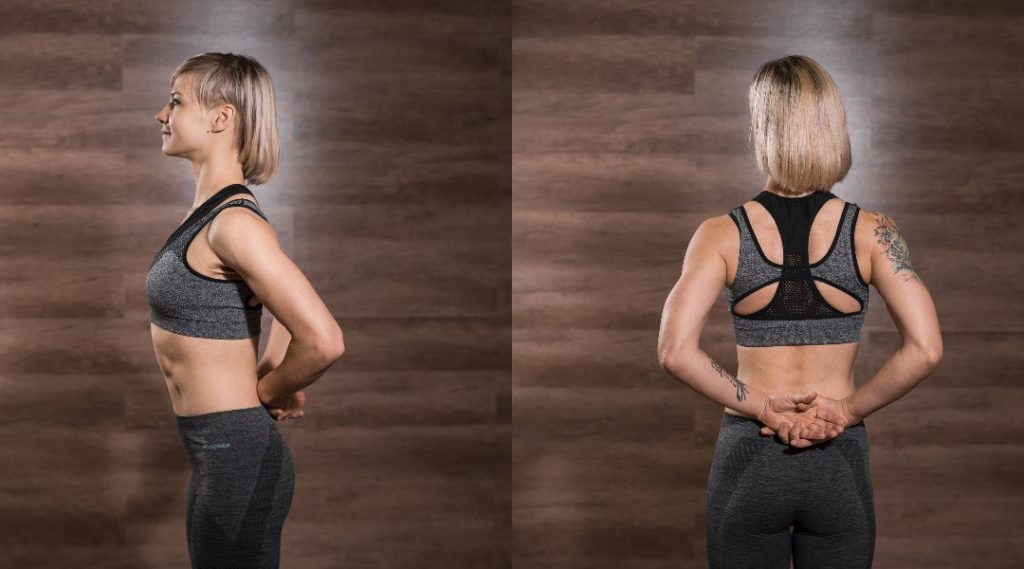
There are a huge number of stretching exercises. There are complexes based on yoga, there are ballet exercises, there are classical and new, as well as experimental. In order not to get confused in this variety and eliminate mistakes when choosing a training program, you can read reviews and recommendations. Popular articles provide detailed descriptions and tips on what to look for when performing various types of stretching exercises, as well as the best complexes for the shoulder girdle and triceps.
To answer the question of how to relax your shoulders, you can consider sets of exercises, selected for specific groups of muscles of the shoulder girdle. Classes are still recommended to be conducted under the guidance of a trainer, observing the training schedule. He can advise you to keep a diary of activities, and also recommend special manuals with a detailed description of all the exercises in pictures.
What are the exercises
For the front of the shoulders
To perform a stretching exercise, you need to straighten your back and take a stable position. Hands should be joined behind the back in a lock and slowly raised to the maximum possible height. Hold this position for 10-30 seconds.
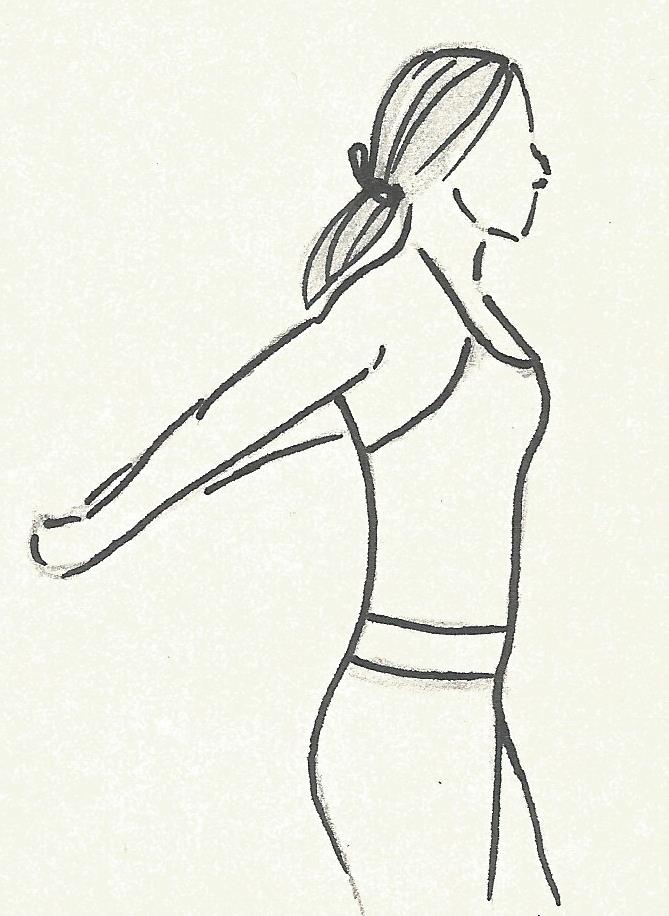
- easy exercise;
- effective for relaxing the chest;
- no additional equipment or special room is required.
- not detected.
Put your palms on your lower back and try to connect your elbows behind your back.
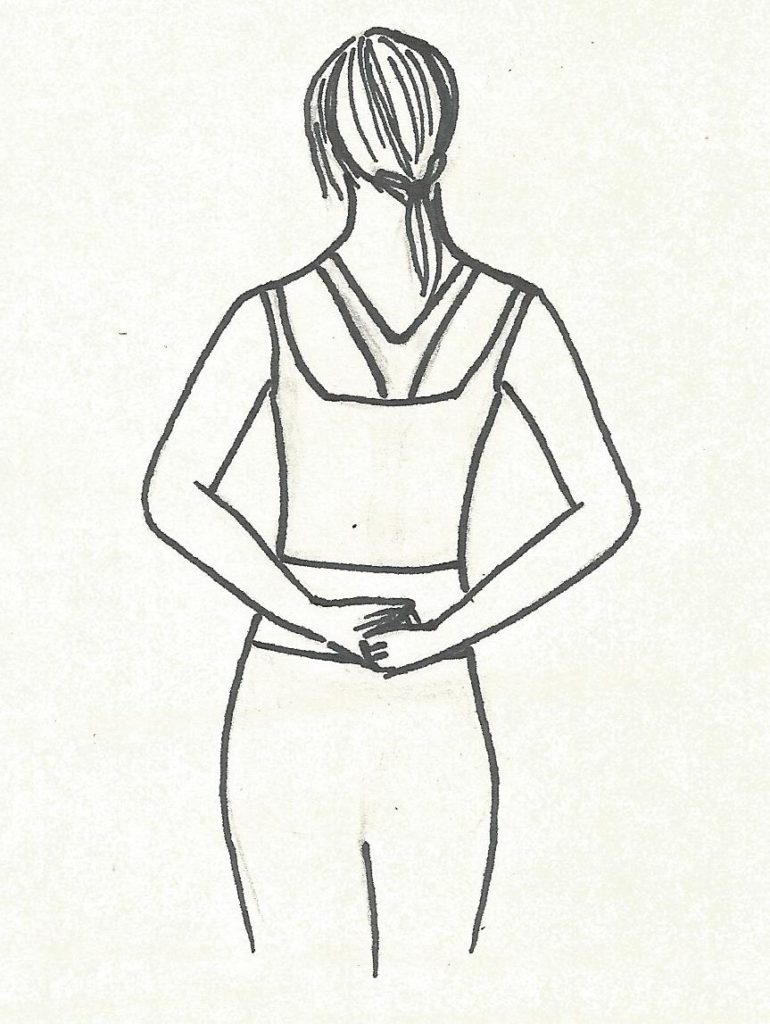
- can be performed anywhere.
- difficult for an unprepared person.
The deltoid and pectoralis major muscles are involved in these movements.
The next exercise requires a palm rest. Ideally, a doorway (or something suitable in height) will do. Place one hand on the top bar, and then step forward and bend over until you feel the muscles being stretched. You should linger in the position of maximum stretch for 10-30 seconds.
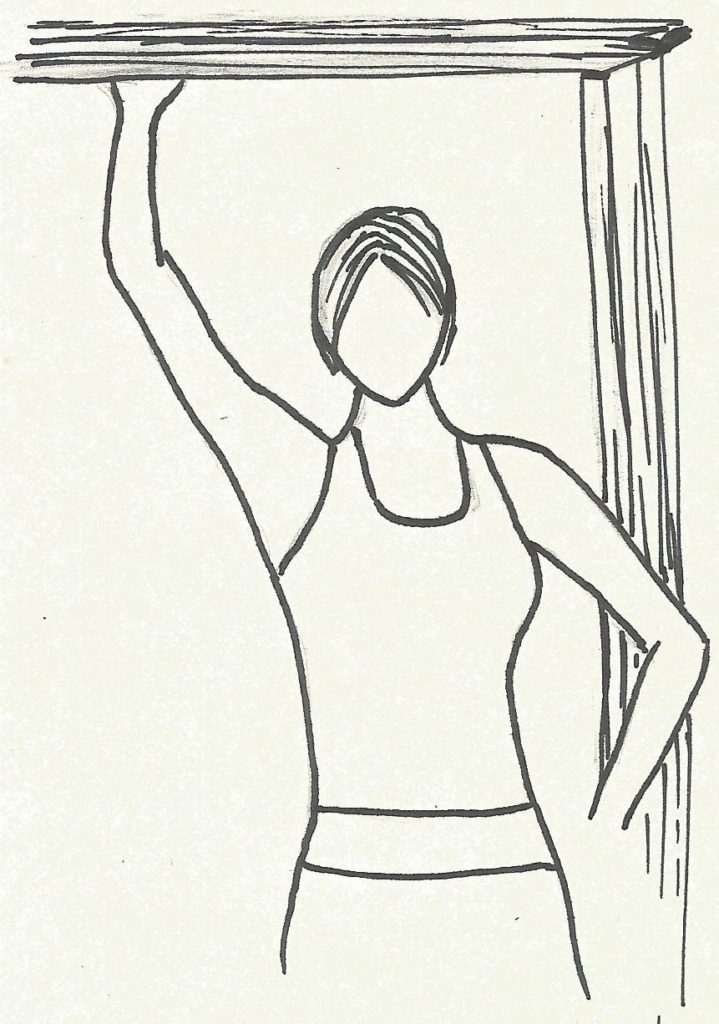
- ease and simplicity of implementation.
- support is required for stretching.
For the middle of the shoulders
From the starting position: feet shoulder-width apart, back straight, arm slightly bent at the elbow must be pressed to the body. With the other hand, grab your elbow and pull it to the side and down.
The middle part of the deltoid muscle works.

- no special equipment required;
- done easily.
- not detected.
For the back of the shoulders
Stand up straight and take a stable position. Press your hand to your chest, extended parallel to the floor. Bend the other arm so that the elbow faces the floor, and press the outstretched arm with it as close as possible. Fix the position for 10-30 seconds.
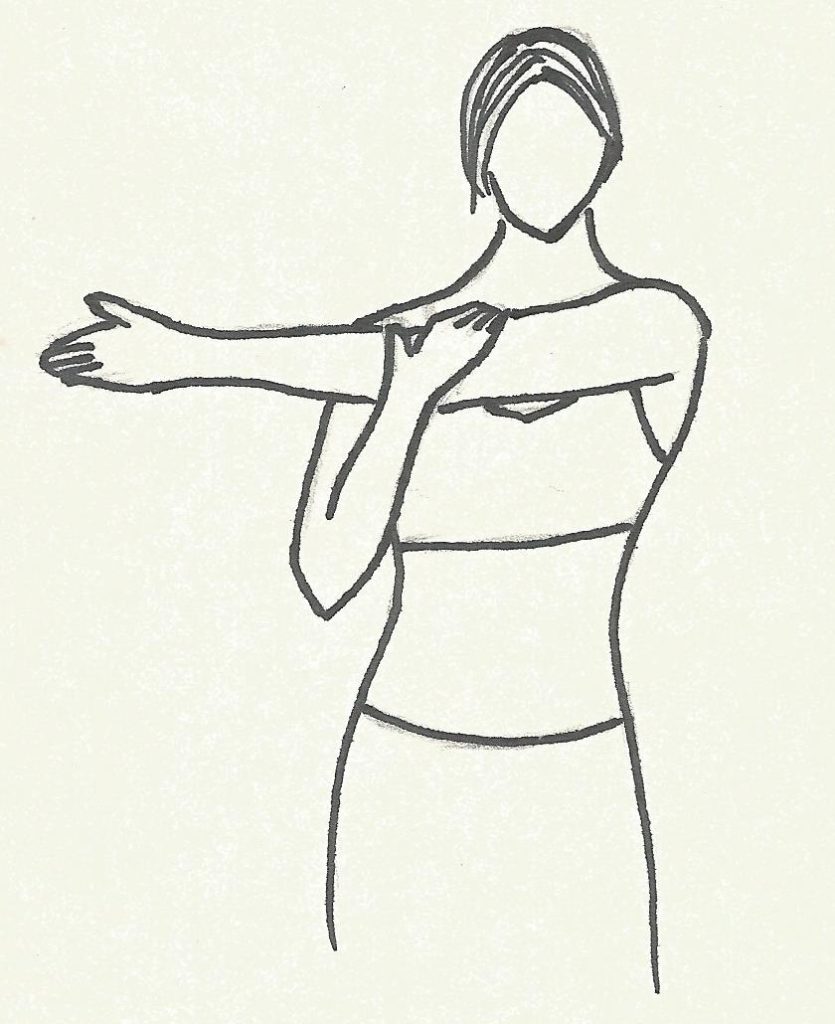
The posterior part of the deltoid muscle, the large rhomboid, supraspinatus and infraspinatus muscles work.
- exercise is recommended for treating shoulder injuries;
- helps with stretching the upper back, neck and triceps.
- not detected.
Stand up straight. Put one hand behind the back at the level of the lower back, the elbow looks to the side. Bend your other arm forward with your elbow. Grab the first hand and pull it forward. Hold for 10-30 seconds. The infraspinatus and supraspinatus muscles work.
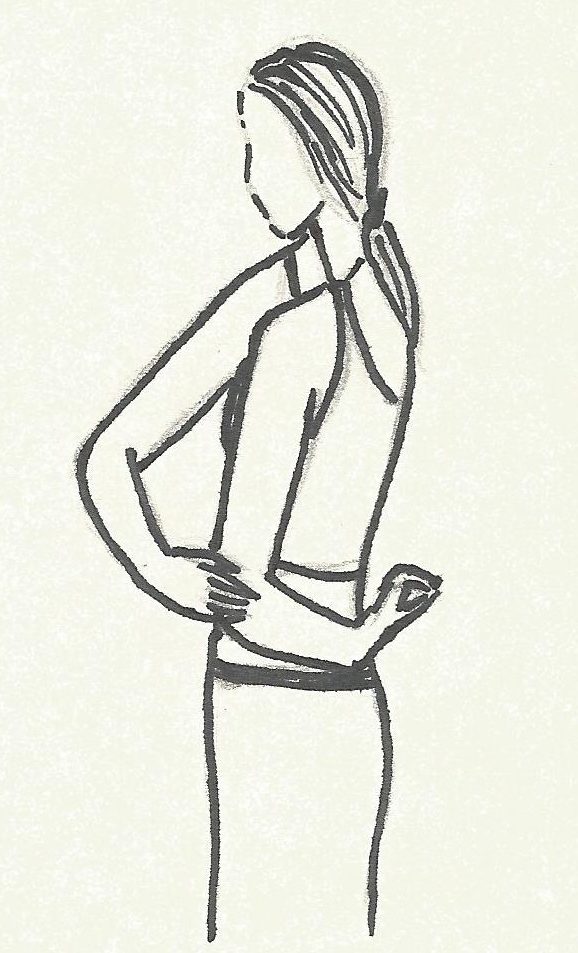
- easy and effective exercise.
- not detected.
When stretching the shoulders, do not forget about stretching the muscles of the chest and latissimus dorsi.
For the chest
Stand against the wall. Put your palm bent at the elbow, hands on the wall at chest level. Take a step back and turn the body in the opposite direction from the wall. Hold the position for 10-30 seconds.
The pectoralis major muscle works.
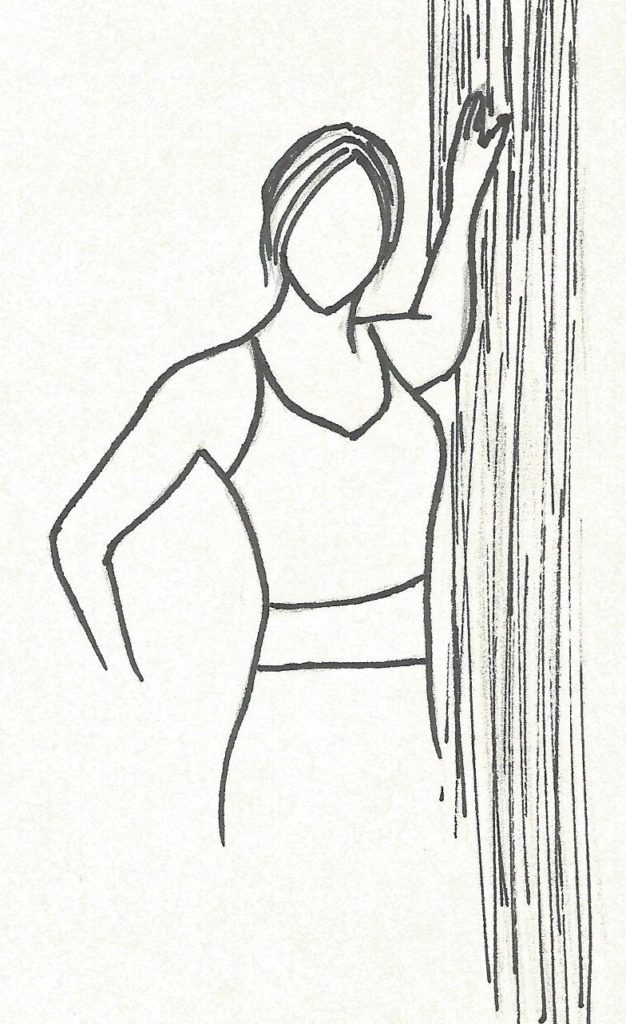
- efficiency and ease of implementation.
- support is required.
For the latissimus dorsi
It is necessary to stand facing the wall and rest against it with your forearm. Press your body forward, stretching your back.
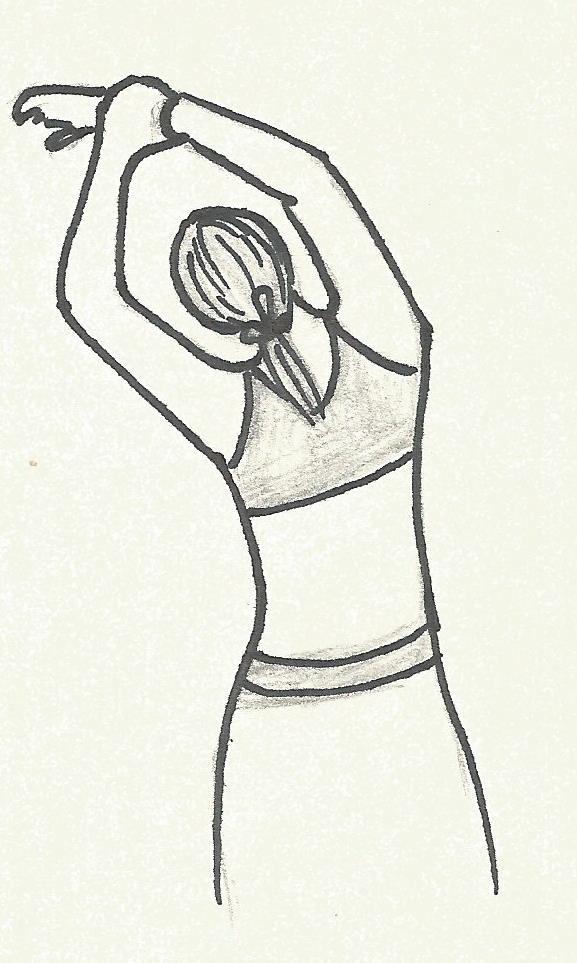
- easy and relaxing exercise.
- flat support required.
"Butterfly wings". Place your palms on your shoulders. Left to left, right to right. Pull your elbows back, linger in this position for 20 seconds. The back should be tense. Then stretch your elbows forward, touching them. Fix the position for 10-15 seconds.
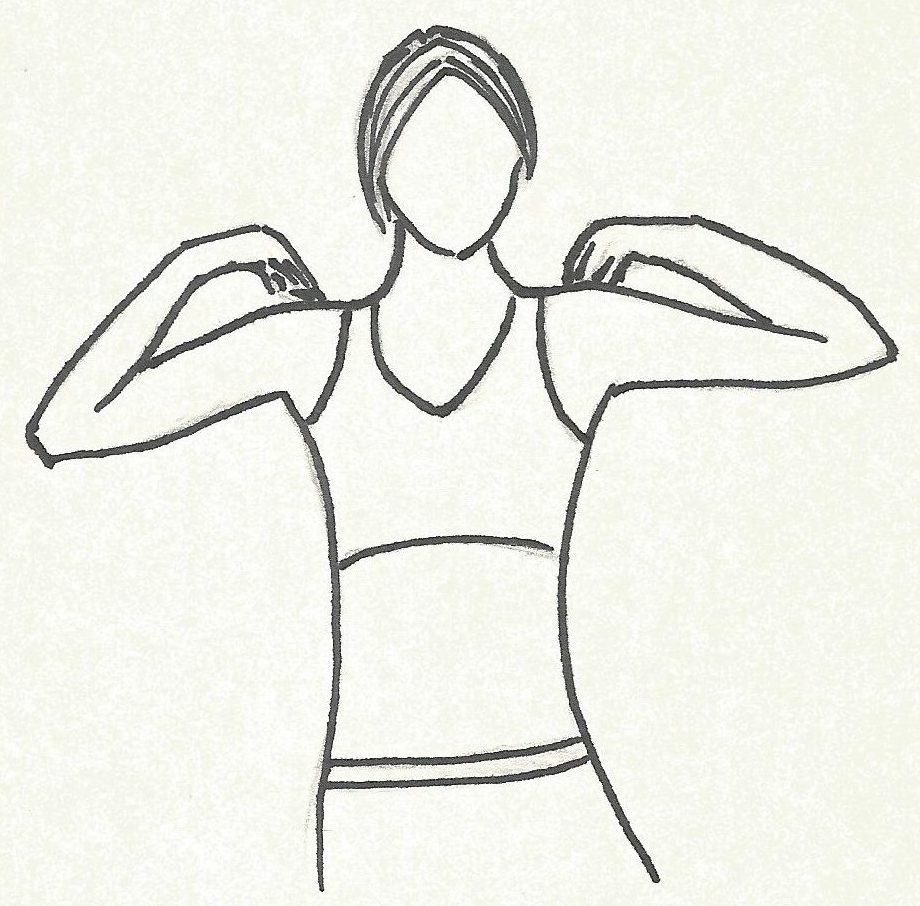
- accessible even for beginners;
- can be performed anywhere.
- not detected.
After the complex for stretching the shoulder girdle, it is good to move on to stretching the arms. According to athletes, and they are undoubtedly right, the bulk of the arm is determined by the biceps and triceps. That is why the creation of a beautiful relief of this part of the body depends on the development of these two muscles.
Triceps stretch
The bent arm must be thrown onto the upper back. The elbow looks at the ceiling, the palm is between the shoulder blades. With the other hand, you need to pull the elbow to the head for 10-30 seconds.
The triceps muscle works.
and
- light exercise with a relaxing effect.
- not detected.
Straighten up and raise your hands over the finished one. Stretch as high as possible for 10-30 seconds. The movement is good to perform alternately for each shoulder.
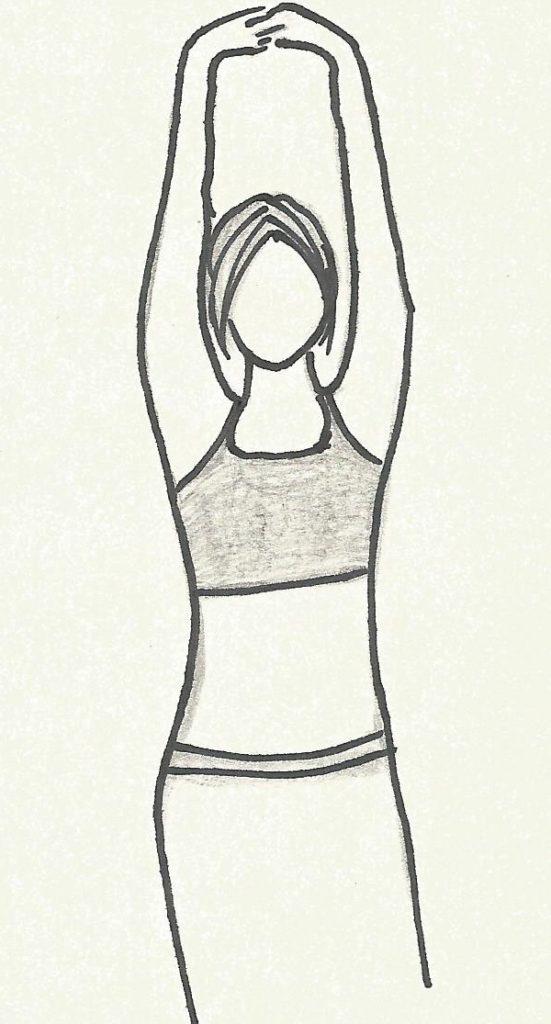
- additional stretching for the latissimus dorsi.
- dizziness may occur, especially after intense physical activity.
Popular exercise: locking. One hand should be brought behind the back from above over the shoulder, and the other - from below at the level of the lower back. You need to try to close your fingers in the lock. At the initial stage, a light touch will be enough. If even this is difficult, then you can use a towel or rope and slowly "crawl" along it with your fingers towards each other behind your back.
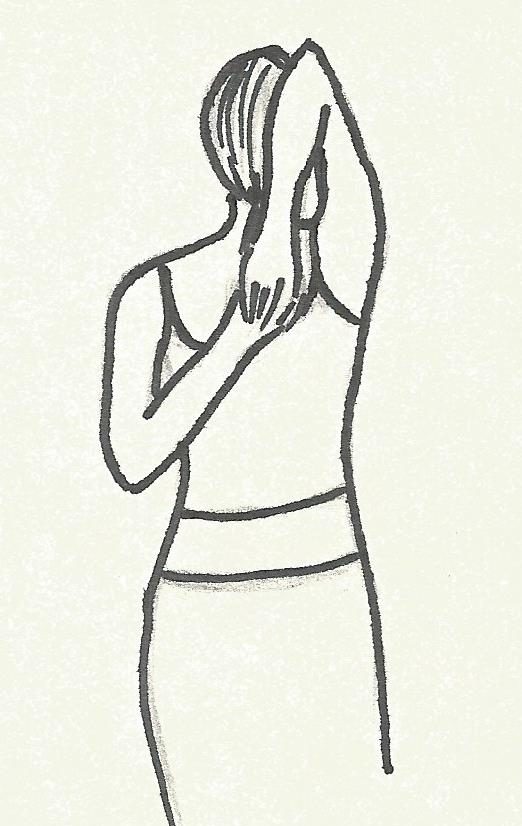
- an effective exercise with several difficulty levels suitable for both beginners and advanced athletes.
- not detected
Biceps stretch
Stand with your back to a doorframe or other suitable support. Hook with your hand so that the elbow points up and the thumb down. The arm should be parallel to the floor. Stretch your body forward for at least 30 seconds.
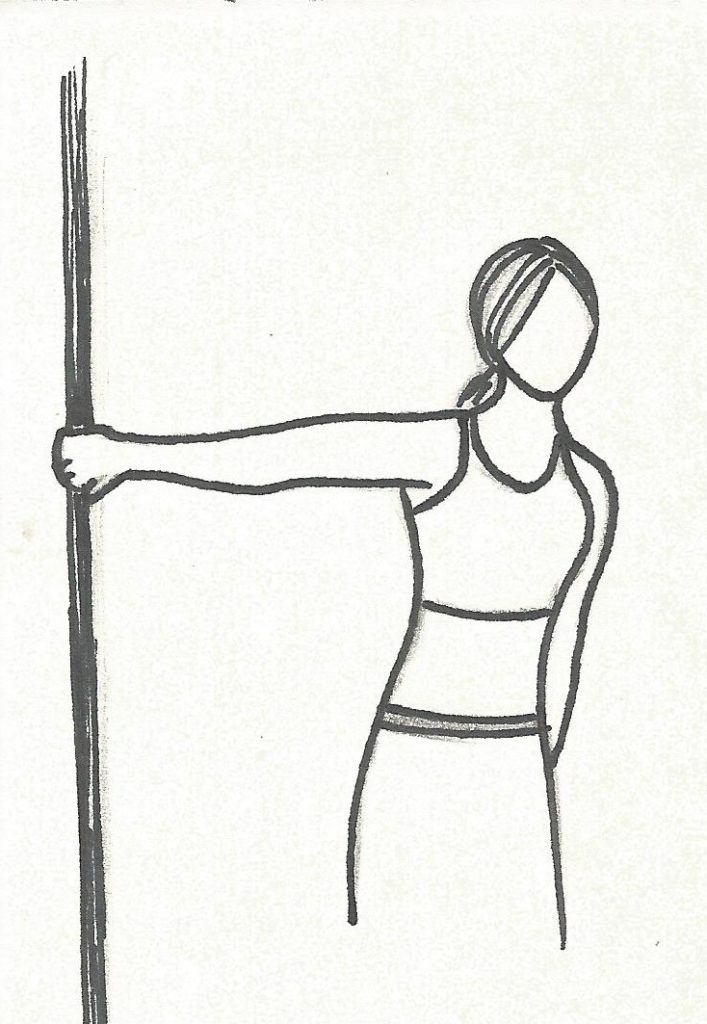
- efficiency.
- support is required.
Conclusion
When performing stretching, it is imperative to monitor the state of the body: breathing, heartbeat, sensations in the muscles. Overexertion and pain should not be allowed. Excessive efforts, when stretching in an unprepared person, can injure both the muscles and joints.After that, it will become impossible to continue training, a course of recovery procedures and subsequent observance of restrictions on physical activity will be required. According to the trainers, classes should bring joy and pleasure. Only in this case will they be useful.
After a few sessions, subject to their regularity and proper conduct, the silhouette acquires harmony, the body becomes flexible, which means that health and quality of life improve. Stretching is not in vain referred to as healing and rejuvenating procedures. Healthy, strong muscles and joints allow you to stay active for many years and forget about movement problems.
Popular articles
-

Top rating of the best and inexpensive scooters up to 50 cubic meters in 2020
Views: 97661 -

Rating of the best materials for noise insulation for an apartment in 2020
Views: 95022 -

Rating of cheap analogues of expensive drugs for flu and colds for 2020
Views: 91750 -

The best men's running shoes in 2020
Views: 87680 -

Top ranking of the best smartwatches 2020 - price-quality
Views: 85091 -

Best Complex Vitamins in 2020
Views: 84801 -

The best dye for gray hair - 2020 top ranking
Views: 82406 -

Rating of the best wood paints for interior use in 2020
Views: 77202 -

Ranking of the best action cameras from China in 2020
Views: 75269 -

Rating of the best spinning reels in 2020
Views: 74827 -

The most effective calcium supplements for adults and children in 2020
Views: 72462 -

Top rating of the best means for male potency in 2020 with a description
Views: 68296